Smartphone giant Vivo made a splash in the Indian market in 2019 with the introduction of its X series flagship smartphones. The first device in the lineup, the Vivo X50, boasted impressive optics and offered a compelling flagship experience. Since then, Vivo has focused on improving the camera capabilities of the X series with each iteration.
The Vivo X90 Pro, launched today, comes across as the epitome of camera ingenuity mustered by the company so far. The new flagship packs in a 1-inch sensor tuned by ZEISS and some cutting-edge computational features that promise to take mobile photography to the next level. That said, the Vivo X90 Pro is more than just what its cameras offer, and in this review let’s find out if the device can be your next premium flagship.

Verdict
The Vivo X90 Pro is intended to serve as a handy companion for shutterbugs that want to push the boundaries of smartphone photography. However, there’s more to this ultra flagship than just a great image-capturing experience. You also get top-notch performance, a svelte design, lasting battery, and a vivid display. Overall the X90 Pro masters a lot of smartphone traits but it is an absolute champ with its optical skills.
Cameras
There’s a lot to talk about the phone’s camera hardware and its implementation, so let’s just dive right into it. The 1-inch Sony IMX988 primary sensor is the main focus of the optical setup and for good reason. There are, of course, a ton of other customisation options embedded within the camera app, as can be expected from a phone focused on photography. However, for some of the more casual photographers, it matters more how good a shot can be captured with just the snap of the shutter. In that regard, the X90 Pro’s point-and-shoot camera experience is extremely polished.
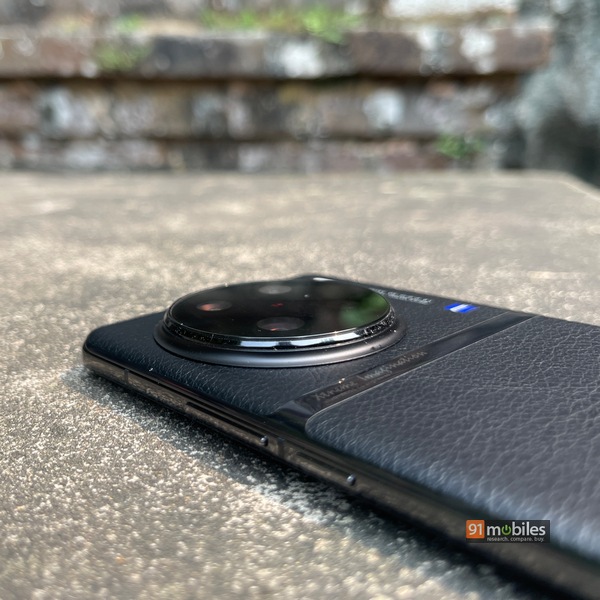
Checking out some of the daytime shots on the Vivo X90 Pro, the images churned out are detailed and rich in colour, and high in dynamic range. The ZEISS Natural Color mode, which I kept enabled for most of my camera testing, adds an extra touch of realism to shots and tones down saturation levels. While the gimbal stabilisation, prevalent on some previous iterations of the X series, has been abandoned, the OIS is powerful enough to compensate for most of the shake.
The autofocus and tap-to-focus are instant and there is also the option to manually track fast-moving objects. Shutter speeds are fast enough to get crisp shots in a variety of lighting conditions. Vivo makes use of its new V2 chip that streamlines the X90 Pro’s image-processing pipeline and enables several other enhancements. This includes things like a good visual representation of highlights and details in the shadows. Automatic HDR turns on effectively in situations where it is required to amplify a shot.
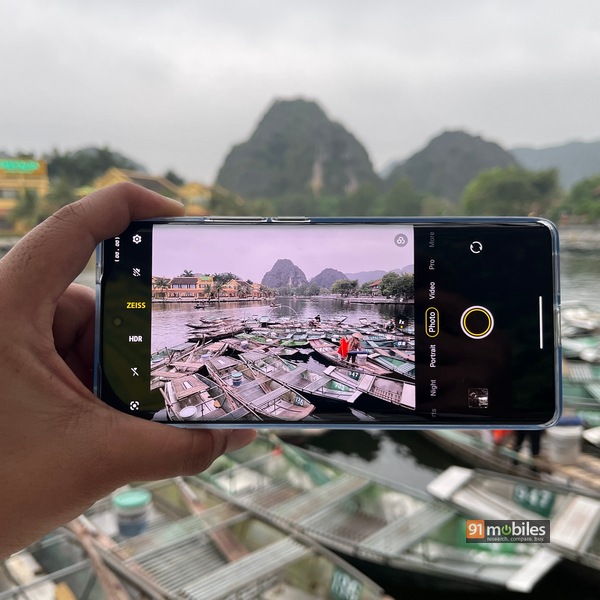
Let’s now talk about some of the extra features that are more geared toward photography enthusiasts. The Effects Master tab in the settings menu allows an easier change in colour temperature levels with a swipe across the viewfinder. There’s a Super Macro mode, enabled by the 12MP ultra-wide shooter, that can turn on automatically as soon as you co close to a subject. What I like here is that switching to the secondary lens is almost instantaneous and the focus is maintained even through a decent amount of shake. The ultra-wide lens itself has a decent field-of-view and maintains colour temperatures in close proximity to the main 1-inch sensor.


Portrait mode had me impressed the most with the 50MP Sony IMX768 depth shooter capable of superlative background separation and edge detection. On human subjects there did appear to be some facial retouching but I guess it does make for easier sharing on social media. Apart from that you have the Pro mode and several customisation options that are on offer to correct white balance, exposure, saturation, shutter speeds, and so on. Images can be snapped in RAW and SuperRAW formats, ready for editing in Photoshop.
There’s Double Exposure which takes a bit of practice to properly execute but it basically puts a translucent overlay of some in-built presets or any photo you have clicked on the viewfinder. You can do the same with the front and back cameras as well. I wouldn’t call the feature a gimmick, per se, since the final outputs can look quite impressive if you manage to get it right.
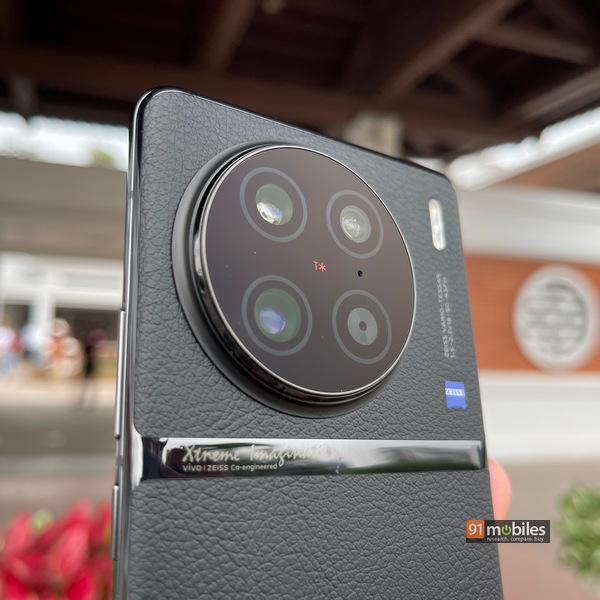
Low-light photography is kind of a highlight of the X90 Pro and the photos shot at night are quite soothing. The V2 chip again plays a vital part in how the final image is churned out. There’s a good amount of detail in areas with more ambient lighting and the manual exposure slider works like a charm to introduce the right luminosity in the viewfinder. The shutter speeds play an important role in capturing better highlights and colours without adding noise. Computational photography is equally relevant, via the dedicated Night mode, for snaps more faithful to nighttime realism and getting better details in the shadows.


Other options for optimised shooting consist of long exposure snaps with results best suited for when the X90 Pro is on a tripod. There’s the Night Panorama that churns out respectably good images if there’s moderately good lighting. You also get some other features like Astro mode and Super Moon, both of which were present on the X80 Pro from last year. Above all, I think the Sports mode, a separate tab alongside Night mode, is the most impressive use case for the X90 Pro’s camera. Using Night Sports mode allows for instant capture of what the viewfinder is displaying. There are no fancy background AI enhancements and the snap is as clean as a whistle. Sports mode is also extremely handy when capturing images from a fast-moving object like a bus or train.
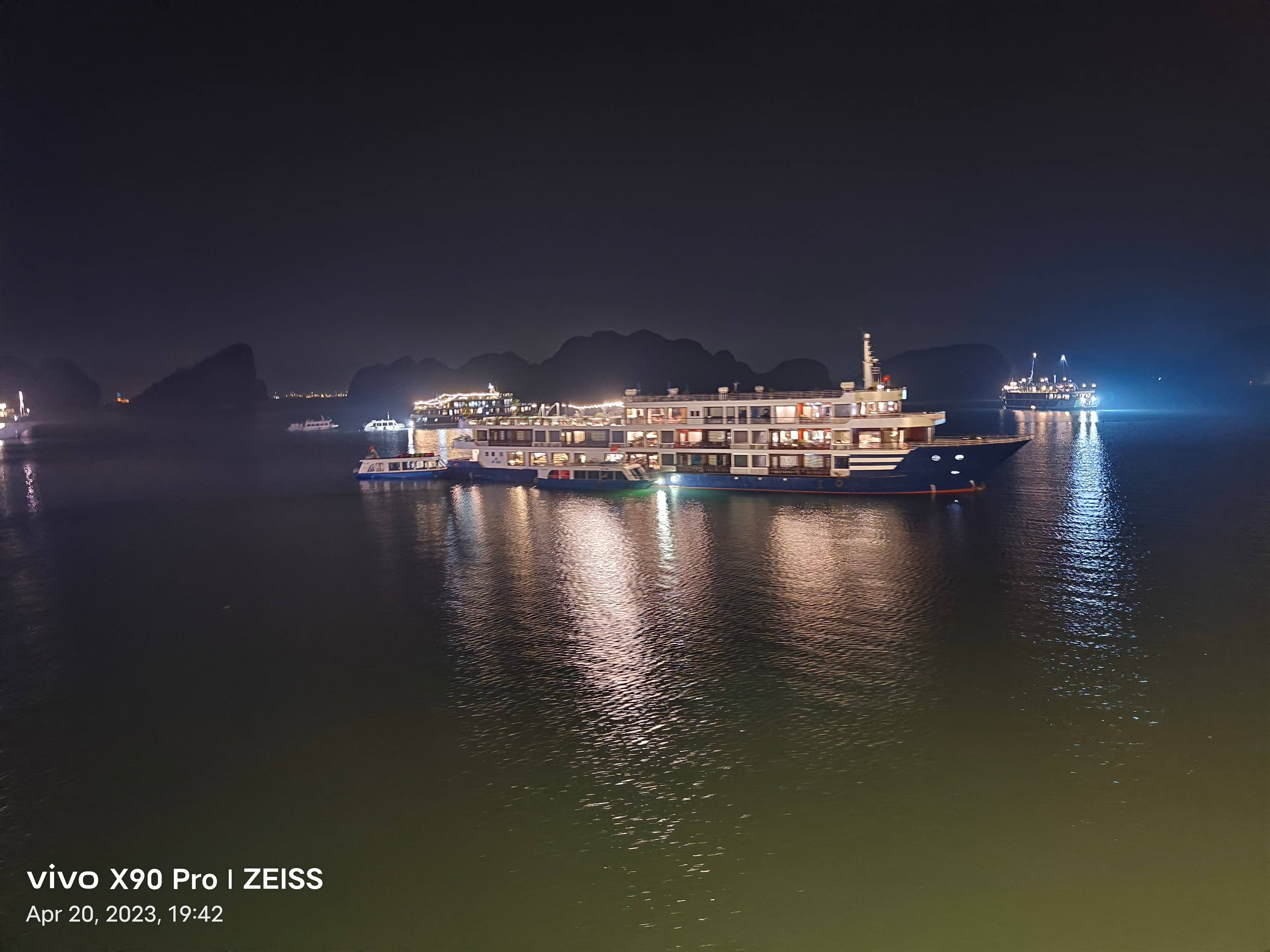

Some other features of note include the ability to shoot HDR10+ videos but only at 1080p @ 30fps. The phone can shoot 4K videos at 60fps and even 8K at 24fps but the latter doesn’t have any of the ultra stabilisation modes that are offered on the X90 Pro. Speaking of which, the phone does have three modes of stabilisations to choose from, all of which work at different resolutions and frame rates. The most hardcore is the horizontal line mode which shoots stable vertical videos even when the camera has been tilted horizontally. Of course, you won’t get the best frame rates and the quality is just about passable. However, both ultra and standard stabilisation modes are quite good at removing shakes from your videos.
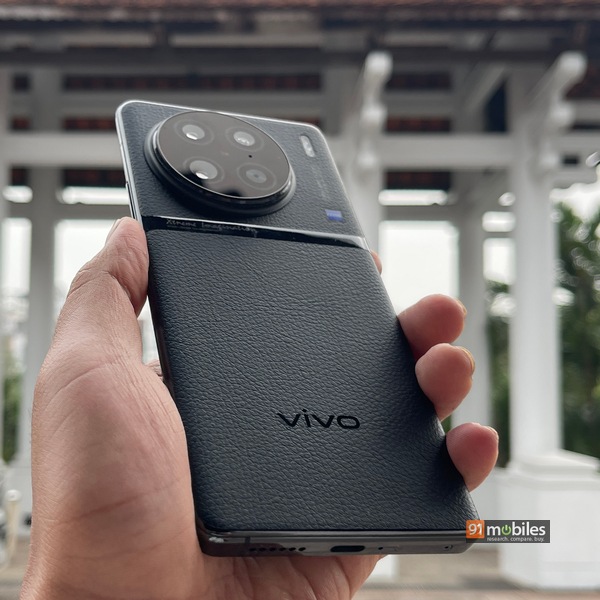
Finally, there is the 32MP selfie shooter up front, not highlighted as prominently as the rear shooters but a worthy addition nonetheless. Vivo has minimised its facial oversharpening and added a more realistic touch to skin tones which results in Instagram-worthy selfies right from the camera. My overall impression of the X90 Pro’s image-capturing prowess is quite positive and I think the smartphone photography audience will find a satisfying refuge in the handset’s capabilities.
Design and display
Vivo has not held back when it comes to the phone’s external appearance as well. The back has a premium vegan leather finish that feels remarkably good to the touch and adds durability against accidental drops. A thin metallic strip, where the X90 Pro’s slogan ‘Xtreme Imagination’ is present, separates the camera housing from the phone’s bottom half. Here I have to add that the optical hardware that Vivo has crammed in the handset forces the camera ring to jut out substantially from the chassis. Consequently, it can lead to a lot of wobble on a flat surface but the company does provide a clear silicone case that fits snuggly on the device and evens out the back.

The phone has a narrow aspect ratio and is easy to grip in the hand. As for weight, the X90 Pro tips the scales at 214g while the enormous camera hump adds to the thickness at 9.34mm. The X90 Pro is only available in Legendary Black, a colour option that, I feel, exudes sheer elegance. In fact, the handset’s design is reminiscent of a piece of art, making it easily stand out. Apart from that the X90 Pro has an IP68 water and dust resistance rating, a standard addition for premium flagships.
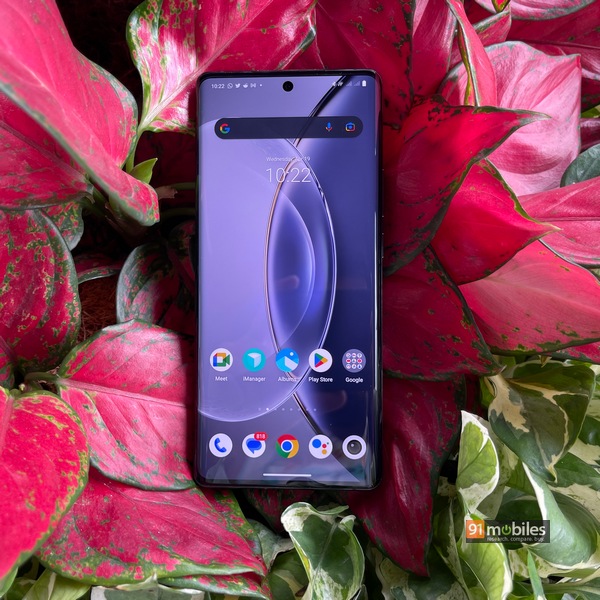
There is stereo sound setup on the handset wherein the earpiece doubles up as the secondary speaker. The power button and volume rocker are positioned on the side at a distance that is easily reachable. The construction of the X90 Pro is sturdy and without any flex in the middle. Overall, the smartphone can be considered refined and well-crafted to suit the needs of a premium user.
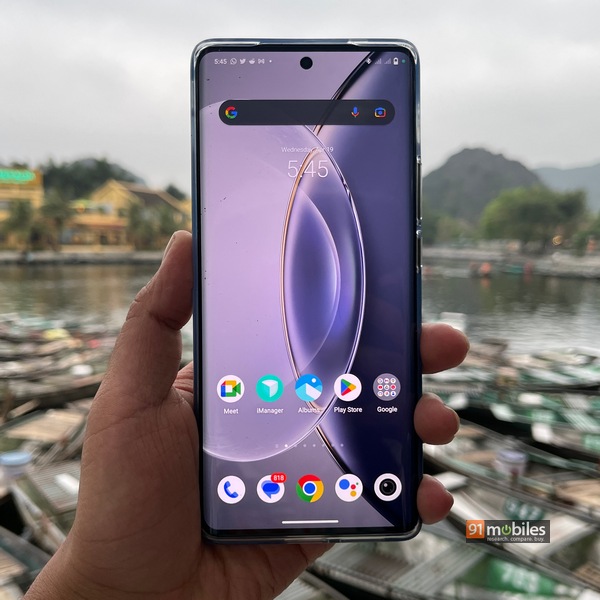
Display-wise, the phone gets a 6.78-inch AMOLED panel with 120Hz refresh rate. The maximum resolution is slightly higher than FHD+ at 2,800 x 1,260 although it is not quite QHD+ like last year’s X80 Pro. Even so, the screen is of the highest quality in the Android world and makes for a splendid visual aid. Vivo X90 Pro comes with an HDR10+ certification, allowing for a high dynamic range on the device’s display. This feature works seamlessly with OTT platforms such as Netflix, providing users with an impressive viewing experience
Apart from just Netflix, YouTube, and Amazon Prime Video also reap the benefit of the X90 Pro’s customised visual enhancements in terms of contrast ratios and vibrancy. The screen is bright enough at up to 1,500nits for easy indoor and outdoor usage without breaking a sweat. Despite having a curvature on either side, the screen does not register any kind of accidental touches. The bezels are quite slim, providing an expansive viewing area and there is a punch-hole up top for the selfie shooter.
Performance and software
Unlike the predecessor, Vivo has used the services of MediaTek to handle the X90 Pro’s performance. Specifically, you get the new Dimensity 9200 SoC which, like Qualcomm’s Snapdragon 8 Gen 2, is based on a 4nm manufacturing process. Long story short, the handset offers pure flagship-grade processing prowess and its hardware capabilities rival even the best of Android handsets. On the likes of Geekbench 6, the phone has a multi-core result of 4,373 and on Antutu the overall score is above 1,200,000.
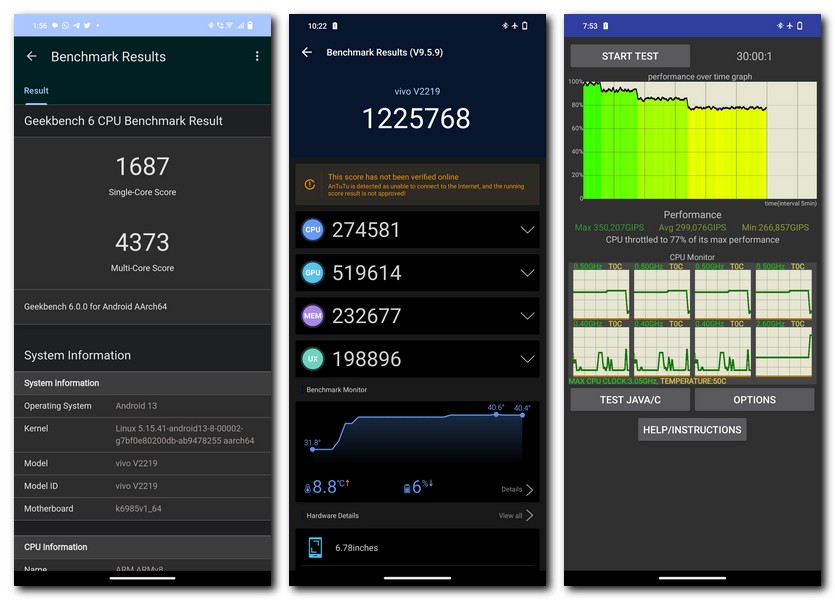
These tests prove that the X90 Pro is capable of handling even the most intensive of tasks thrown at it. Also, it does so more-or-less efficiently with up to 77 percent of its peak performance maintained under load. Normal everyday usage involving social media apps, food delivery services, OTT consumption, Chrome browsing, and more, are accomplished effortlessly. Even the camera app is extremely fluid in its operation whether you are snapping SuperRAW images or shooting 8K video. The phone has a large 4,002mm2 vapour chamber with liquid cooling for continuous heavy GPU activity. I downloaded Apex Legends: Mobile and Call of Duty: Mobile, both of which churned out 60fps gameplay without the phone overheating.
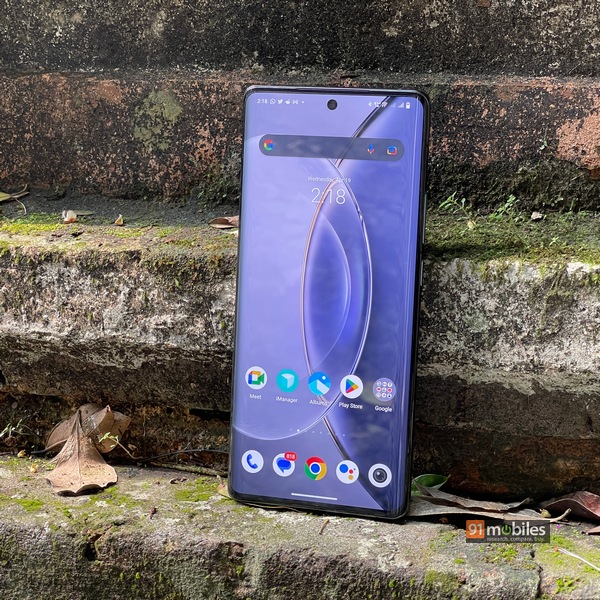
Other features on the device include a stereo speaker setup with good clarity and volume levels. There’s 12GB of fast LPDDR5X RAM present, supported by 256GB of UFS 4.0 storage. As for the in-display fingerprint sensor, the setup process is fairly easy but I did find that authentication sometimes took multiple tries. The X90 Pro also comes with eSIM support if you don’t wish to use the second physical nano-SIM slot. 5G needs on the device are met amicably with support for all popular bands in the country. I used the phone both in Vietnam and on Noida’s Jio circle without any issues.
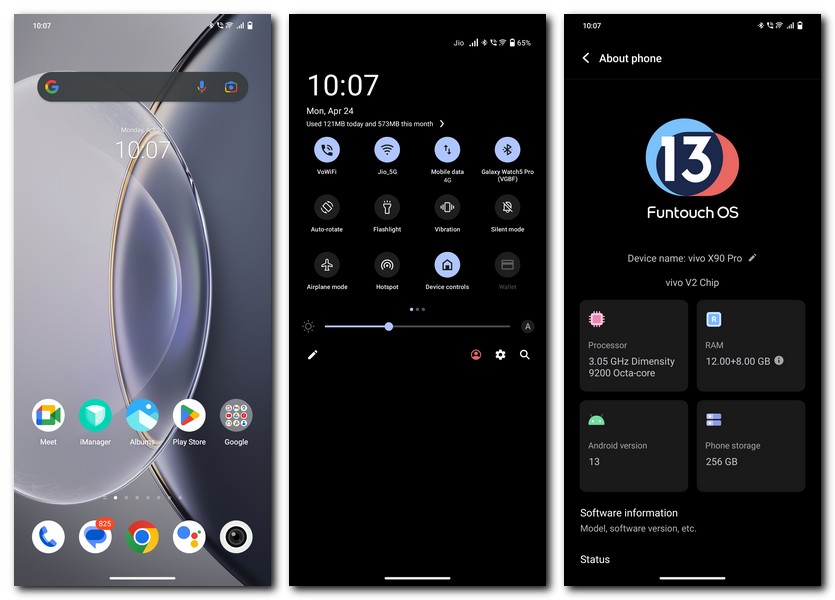
Handling the software is Vivo’s proprietary FunTouchOS 13, which is based on the Android 13 platform. The overall interface is geared towards functionality, customisation, and usability. In comparison to the last few iterations of FunTouch, bloatware activity has been marginally reduced but you still see the occasional Vivo-themed apps. The more utility-driven features include an upgraded Color Theming Engine to tailor-make your home screen and wallpaper. You can also hide photos in the Album app and also remove the metadata of a shot, while sharing, for increased privacy. Apart from that Vivo’s iManager app gets an additional feature for phone cooling that does knock off a few degrees of the phone’s temps by shutting down background apps. On the whole, FunTouchOS 13 closely resembles its last iteration but with a few more useful features sprinkled on top.
Battery

In terms of battery life, the Vivo X90 Pro has a sizeable 4,870mAh cell that can be charged at 120W speeds. My experience, with the device’s ability to last through the day on a single charge, has been more than satisfactory. When not using 5G or LTE services, the Vivo X90 Pro provides up to seven hours of screen-on time. This number drops a bit when the camera app is used more extensively but you will easily get a full day’s worth of use from the smartphone. What’s more, the handset can juice up from 0 – 100 percent in less than 30 minutes, which makes it easier to top up the phone quickly in the morning and get ready for the day.
Final verdict

There’s little doubt in my mind that the Vivo X90 Pro is more camera than smartphone. The company and its product team have given significantly more time to the optical hardware and made it such that there’s appreciation from all ends of the photography enthusiast spectrum. Of course, leveraging the X90 Pro’s image-taking prowess does not come cheap and you will have to shell out Rs 84,999 to get your hands on the device. However, you should also consider that the phone does not seem to be lacking in any department when it comes to offering a premium smartphone experience. Whether it is processing, design, battery life, or display, the X90 Pro has you covered. The handset sets an impressive benchmark for smartphone photography that might be hard to surpass.
Editor’s rating: 4 / 5
Pros:
- Impressive cameras
- Vibrant display
- Premium build
- Fast 120W charging
Cons:
- Pricey
- Could use a telephoto sensor
The post Vivo X90 Pro review: Xtreme photography first appeared on 91mobiles.com.
0 Comments